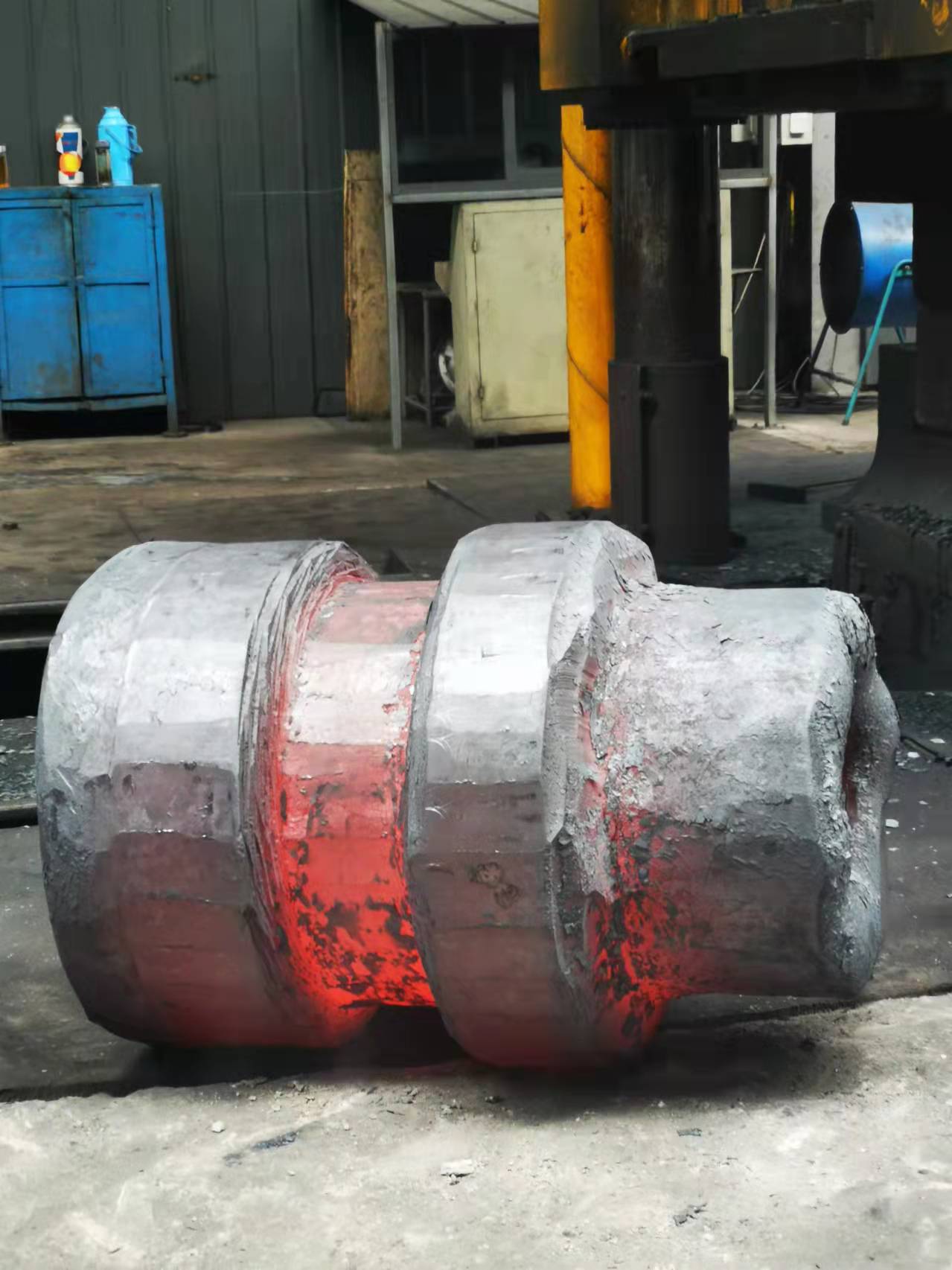Forging classification
2022-02-23
Forged Category
According to the forging temperature, it can be divided into hot forging, warm forging and cold forging.
According to the forming mechanism, forging can be divided into free forging, die forging, ring rolling and special forging.
1. Free forging. It refers to the processing method of forgings that use simple universal tools or directly apply external force to the blank between the upper and lower anvils of the forging equipment to deform the blank to obtain the required geometric shape and internal quality. Forgings produced by the free forging method are called free forgings. Free forging is mainly based on the production of small batches of forgings. Forging equipment such as forging hammers and hydraulic presses are used to form and process the blanks to obtain qualified forgings. The basic processes of free forging include upsetting, drawing, punching, cutting, bending, torsion, offset and forging. Free forging is all hot forging.
2. Die forging. Die forging is divided into open die forging and closed die forging. The metal blank is compressed and deformed in a forging die cavity with a certain shape to obtain a forging. Die forging is generally used to produce parts with small weight and large batches.
Die forging can be divided into hot forging, warm forging and cold forging. Warm forging and cold forging are the future development direction of die forging, and also represent the level of forging technology. According to the material, die forging can also be divided into ferrous metal die forging, non-ferrous metal die forging and powder product forming. As the name implies, the materials are ferrous metals such as carbon steel, non-ferrous metals such as copper and aluminum, and powder metallurgy materials. Extrusion should belong to die forging, which can be divided into heavy metal extrusion and light metal extrusion. It should be noted that the blank cannot be completely restricted. For this reason, the volume of the blank should be strictly controlled, the relative position of the forging die should be controlled and the forging should be measured, and efforts should be made to reduce the wear of the forging die.
3, rolling ring. Ring rolling refers to the production of ring-shaped parts of different diameters through special equipment ring-grinding machines, and is also used to produce wheel-shaped parts such as automobile hubs and train wheels.
4. Special forging. Special forging includes roll forging, cross wedge rolling, radial forging, liquid die forging and other forging methods, which are more suitable for the production of parts with special shapes.
According to the forging temperature, it can be divided into hot forging, warm forging and cold forging.
According to the forming mechanism, forging can be divided into free forging, die forging, ring rolling and special forging.
1. Free forging. It refers to the processing method of forgings that use simple universal tools or directly apply external force to the blank between the upper and lower anvils of the forging equipment to deform the blank to obtain the required geometric shape and internal quality. Forgings produced by the free forging method are called free forgings. Free forging is mainly based on the production of small batches of forgings. Forging equipment such as forging hammers and hydraulic presses are used to form and process the blanks to obtain qualified forgings. The basic processes of free forging include upsetting, drawing, punching, cutting, bending, torsion, offset and forging. Free forging is all hot forging.
2. Die forging. Die forging is divided into open die forging and closed die forging. The metal blank is compressed and deformed in a forging die cavity with a certain shape to obtain a forging. Die forging is generally used to produce parts with small weight and large batches.
Die forging can be divided into hot forging, warm forging and cold forging. Warm forging and cold forging are the future development direction of die forging, and also represent the level of forging technology. According to the material, die forging can also be divided into ferrous metal die forging, non-ferrous metal die forging and powder product forming. As the name implies, the materials are ferrous metals such as carbon steel, non-ferrous metals such as copper and aluminum, and powder metallurgy materials. Extrusion should belong to die forging, which can be divided into heavy metal extrusion and light metal extrusion. It should be noted that the blank cannot be completely restricted. For this reason, the volume of the blank should be strictly controlled, the relative position of the forging die should be controlled and the forging should be measured, and efforts should be made to reduce the wear of the forging die.
3, rolling ring. Ring rolling refers to the production of ring-shaped parts of different diameters through special equipment ring-grinding machines, and is also used to produce wheel-shaped parts such as automobile hubs and train wheels.
4. Special forging. Special forging includes roll forging, cross wedge rolling, radial forging, liquid die forging and other forging methods, which are more suitable for the production of parts with special shapes.
For example, roll forging can be used as an effective preforming process to greatly reduce the subsequent forming pressure; cross wedge rolling can produce parts such as steel balls and drive shafts; radial forging can produce large forgings such as barrels and stepped shafts

X
We use cookies to offer you a better browsing experience, analyze site traffic and personalize content. By using this site, you agree to our use of cookies.
Privacy Policy



